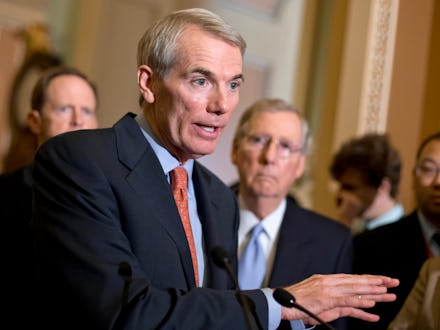Why I'm Fighting For Prison Reform in the U.S. Senate

Each new generation of Americans brings a new perspective and energy to the problems we face as a country. One challenge that has been growing over the last few decades and has caught the attention of many young people is how to stop the cycle of failure in our criminal justice system where more than half of prisoners who are released and reenter society are back behind bars within a few years or even a few months. This has led to a record prison population, huge costs to communities, families and taxpayers, and an increasing number of our fellow citizens who never achieve their potential.
In November, I met a young father named Daniel Jackson. Daniel started using opioids, got addicted, and ended up stealing money from his employer to pay for drugs. He went to jail for 74 days, but after his release, while on probation, he failed a drug test, and was soon back behind bars for another seven months. This time, he went in with a determination to turn his life around. Daniel took part in "re-entry" programs funded through the Second Chance Act. Daniel used the resources available to begin long-term recovery for drug addiction. He also learned how to be a better father. Daniel has now been out of jail — clean and sober — for over a year.
Daniel is just one of thousands of people who have turned around their lives through recidivism reduction programs, and his story points the way forward for prison reform.
In 1980, the federal prison system housed 25,000 inmates. Today, that number has grown nearly tenfold. Since 1980, the prison population has expanded by an average of 6,000 inmates a year. At a cost of around $30,000 per year per inmate, it goes without saying that these inmates impose a significant burden on the federal budget and the American taxpayer.
But our growing prison population is more than a budget problem. It is a social problem that undermines our communities and breaks apart families. And if we are going to address that problem, we have to do a better job of helping people who get out of prison stay out.
The Second Chance Act, a piece of legislation I authored more than a decade ago, has helped to establish and support reentry programs for newly released inmates. Now we need to foster these same kinds of programs in our federal prison system.
The bipartisan Recidivism Reduction and Public Safety Act I've cosponsored with Senator Whitehouse of Rhode Island takes the proven approach of the Second Chance Act and applies it to federal corrections, providing drug treatment, mental health treatment, and job training programs to people who are ready to turn their lives around. We provide incentives, in the form of modest good-time credits, for inmates who are interested in participating and completing these programs.
How much will these reforms cost? In the end, nothing. In fact, the Urban Institute estimates that these reforms will actually save the federal Bureau of Prisons more than $45 million over the next ten years. And those are only the savings we can quantify. The benefits to our communities, to our families, and to the people who get a second chance at life, cannot be measured.
Editor's note: This article is part of PolicyMic's Day of Discussion about prison peform.